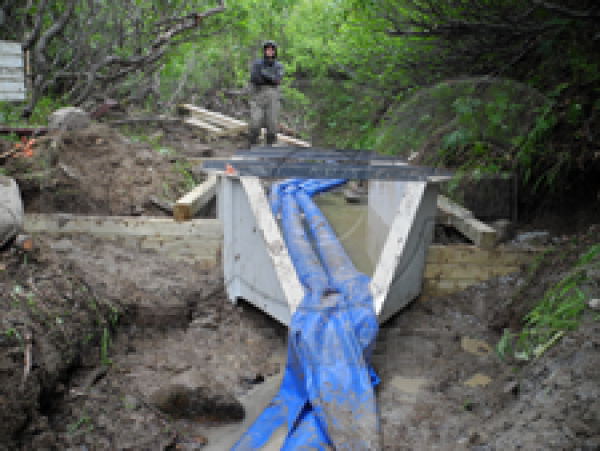This website uses a variety of cookies, which you consent to if you continue to use this site. You can read our Privacy Policy for
details about how these cookies are used, and to grant or withdraw your consent for certain types of cookies.
Freeboard for Flumes and Weirs
The freeboard is the difference in height between the top of a flume or weir and the highest water level anticipated. Freeboard is a guard against overtopping by waves, unexpected rises in the water level, or miscalculation in the maximum anticipated flows. Freeboard is also known as reserve head height.
Flumes
When looking at the discharge tables for flumes it is important to understand whether or not the tables include any freeboard or are, instead, calculated to the top of the flume.
In general, the following discharge tables include freeboard:
†Keep in mind that Palmer Bowlus flumes are proprietary to each manufacturer and as such an individual discharge table may, or maynot include freeboard. Openchannelflow's discharges include freeboard.
While, in general, the following discharge tables do not include freeboard:
These discharge tables are calculated to the top of the flume, so care must be taken when using the tables in sizing the flume.
To avoid confusion, Openchannelflow makes not of if a discharge table is generated to the top of the flume.
The decision to generate a table to the top of the flume or not was made by the principal investigators of the flume. For Openchannelflow’s part, we rely only on tables from original source materials or published industry standards (e.g. ASTM D1941 for Parshall flumes).
Weirs
Using discharge tables for weirs can require a little more attention on the part of the user. As weirs are not fixed in size, most weir discharge tables are generated for the full head investigated by the researchers. For v-notch weirs, this head is 2-feet [60.96 cm].
Keep in mind, though, that just because the discharge table goes to a full 2-feet [60.96 cm], an individual weir may not be large enough to handle the flows.
When using unrestricted weir discharge tables, Openchannelflow has found it to be good practice to allow freeboard of 1/6 of the maximum anticipated depth (Ha) or 2-inches – whichever is greater.
Image: Institute for Land and Water Management Research
Related Blog Posts
Explore more insights in our blog.

LOCATIONS IN ATLANTA, GA & BOISE, ID




